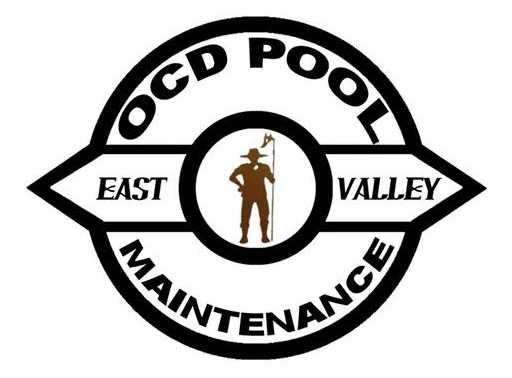A swimming pool can add joy to any home, making it a fun spot for family and friends. But, if ignored, it can become a haven for harmful bacteria and algae. These can seriously harm the health of those who swim in it.
To ensure your pool is safe and clean, it’s vital to stick to a pool cleaning schedule. This schedule should include pool maintenance tips like checking the water chemistry, cleaning the filters, and checking the equipment.
Key Takeaways
- Neglecting pool maintenance can lead to health risks for swimmers.
- A pool cleaning schedule helps keep the pool safe and clean.
- Testing water chemistry is key to a healthy pool.
- Cleaning filters and checking equipment are must-do tasks.
- A well-kept pool offers a safe and fun place to swim.
Daily and Weekly Pool Maintenance Tasks
Keeping your pool clean and healthy is key. Regular checks prevent big problems. This makes sure your pool is safe and fun for everyone.
Every day, you should check the water level and sanitizer levels. The water level should be halfway up the skimmer opening. Also, check the sanitizer levels, like chlorine or bromine, to keep them safe and effective.
Monitoring Water Level and Sanitizer Levels
Understanding water level and sanitizer levels is important. The right water level helps the skimmer work well and avoids damage. Sanitizer levels must be just right to kill germs without hurting swimmers.
- Check the water level daily and adjust as necessary.
- Test sanitizer levels daily, using a pool test kit.
- Adjust sanitizer levels according to the manufacturer’s instructions.
Weekly, you should also check the pool equipment, like the pump and filter. Keeping the pool equipment upkeep in good shape is key for the equipment’s life and the pool’s health.
Weekly tasks include:
- Inspecting the pump and filter for any signs of wear or damage.
- Cleaning the filter according to the manufacturer’s instructions.
- Checking the pool’s circulation system to ensure it’s working correctly.
By doing these daily and weekly tasks, you can keep your pool clean, safe, and fun all season long.
What Regular Maintenance Should Be Done on a Pool? Monthly Checklist
Keeping your pool in top shape is key. It ensures your pool and its equipment last longer. This means doing a series of tasks each month.
This monthly checklist helps keep your pool clean and safe. It covers important tasks like cleaning the filter and checking the water’s calcium hardness.
Cleaning the Pool Filter and Checking Calcium Hardness
Cleaning the pool filter monthly is a must. A dirty filter can cause water circulation problems and lower water quality. It also raises your energy bills.
- Turn off the pump and release any pressure from the filter.
- Remove and clean the filter cartridges or grids according to the manufacturer’s instructions.
- Inspect the filter for any signs of wear or damage and replace it if necessary.
It’s also vital to check the calcium hardness. This measure prevents damage to your pool and its equipment. Calcium hardness is the amount of calcium ions in the water.
- Test the calcium hardness level using a pool test kit.
- If the level is too low, add a calcium hardness increaser according to the product’s instructions.
- If the level is too high, consider partially draining the pool and refilling it with fresh water.
Other monthly tasks include checking the pool and its equipment for damage. Also, inspect the pool skimmer for debris and make sure all equipment works well.
By sticking to this checklist, you can keep your pool clean and enjoyable for everyone.
Seasonal Pool Maintenance Requirements
To keep a pool in top shape, it’s key to do seasonal maintenance. This keeps the pool safe, working well, and fun all year.
Each season brings its own pool challenges. In cold months, you need to protect the pool from freezing. In warm months, you must fight algae and keep the water balanced.
Winterization Steps and Spring Opening Tasks
Winterizing your pool is vital to protect it from cold. This includes:
- Lowering the water level below the skimmer to prevent damage from freezing water.
- Cleaning the pool thoroughly, including the walls and floor, to remove dirt and debris.
- Draining equipment such as pumps, filters, and heaters to prevent freezing and bursting.
- Covering the pool with a durable winter cover to protect it from debris and harsh weather conditions.
When spring comes, opening your pool needs a careful plan. Important steps include:
- Removing the winter cover and cleaning it before storage.
- Inspecting the pool and its equipment for any damage or wear, making repairs as needed.
- Reinstalling and restarting the equipment, checking for proper function.
- Testing and balancing the water chemistry to safe and comfortable levels.
Regularly brushing your pool is also vital. It helps stop algae and keeps the pool surface in good shape. By sticking to these seasonal maintenance steps, you can enjoy a clean and safe pool all year.
Conclusion
Keeping your pool clean is key for a safe and fun swim. By doing daily, weekly, monthly, and seasonal tasks, your pool will stay in top shape. This ensures a clean and safe swimming area.
Knowing when to vacuum your pool is very important. Vacuuming regularly, along with good circulation and filtration, removes dirt. This keeps the water clear and safe for everyone.
By following these maintenance tips, swimming becomes worry-free. Regular upkeep not only makes your pool last longer but also keeps it healthy for everyone.
Need Pool Services in Gilbert, Arizona?
Contact OCD Pool Maintenance today to keep your pool in great shape with our weekly pool maintenance services!



